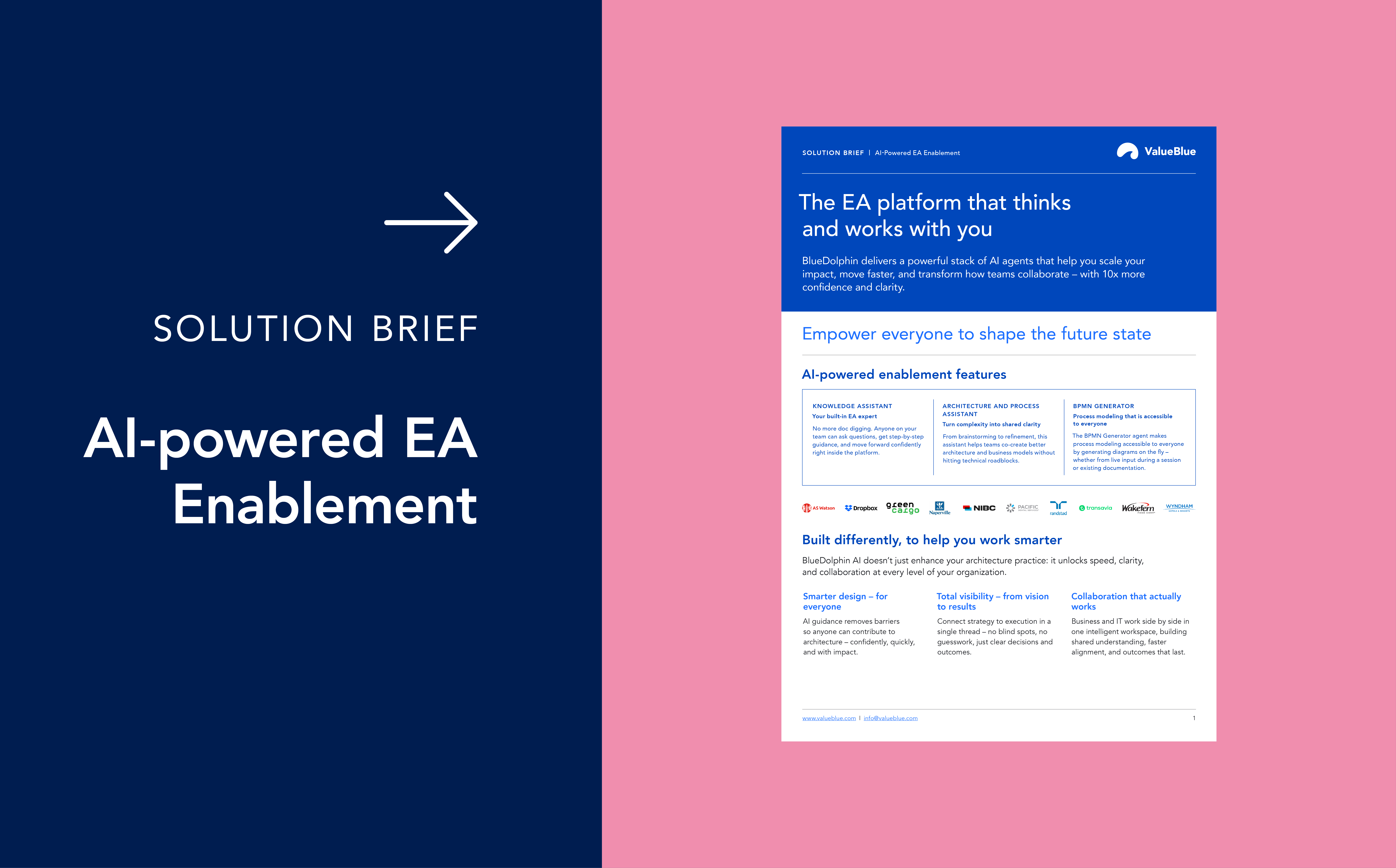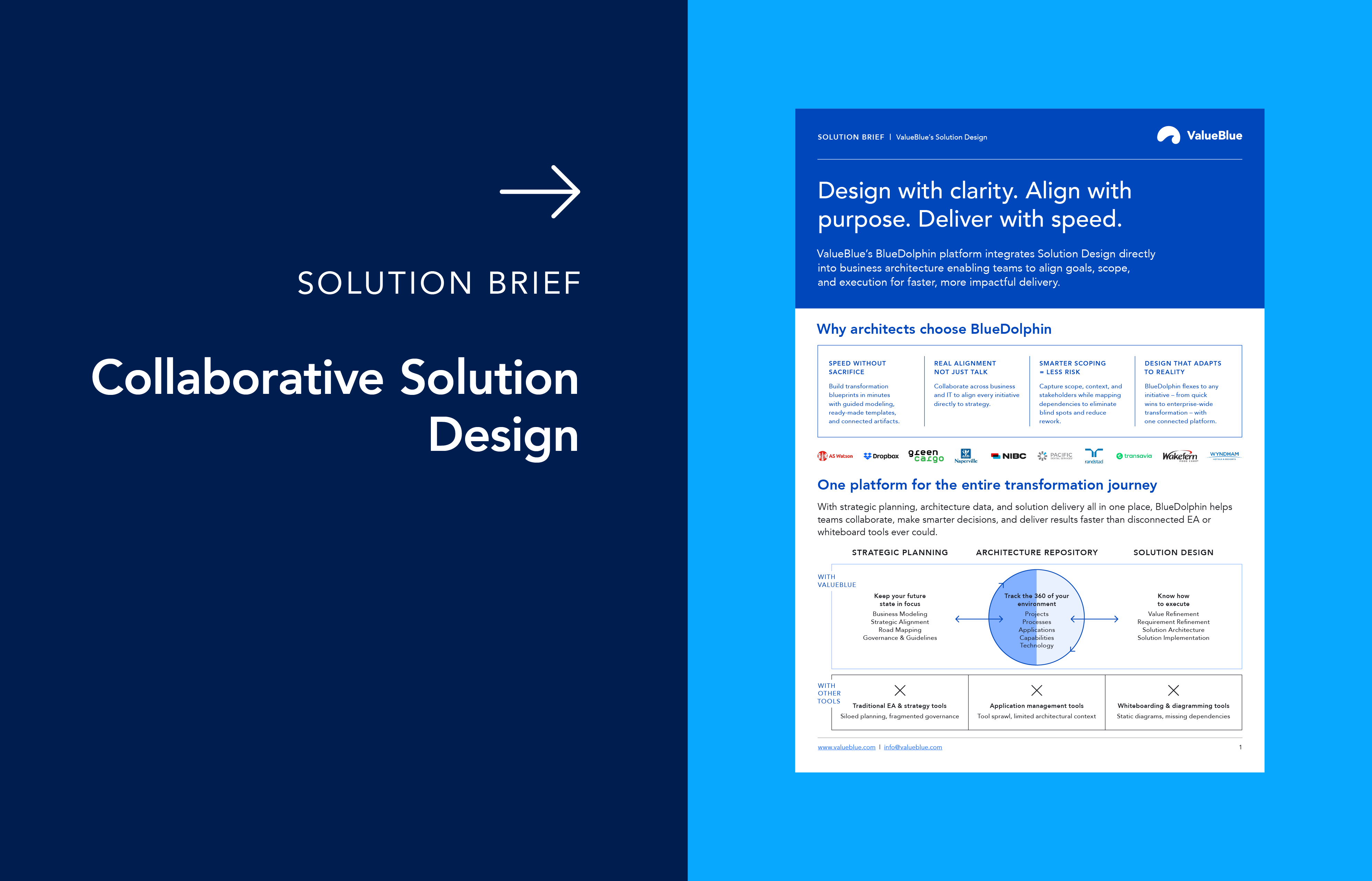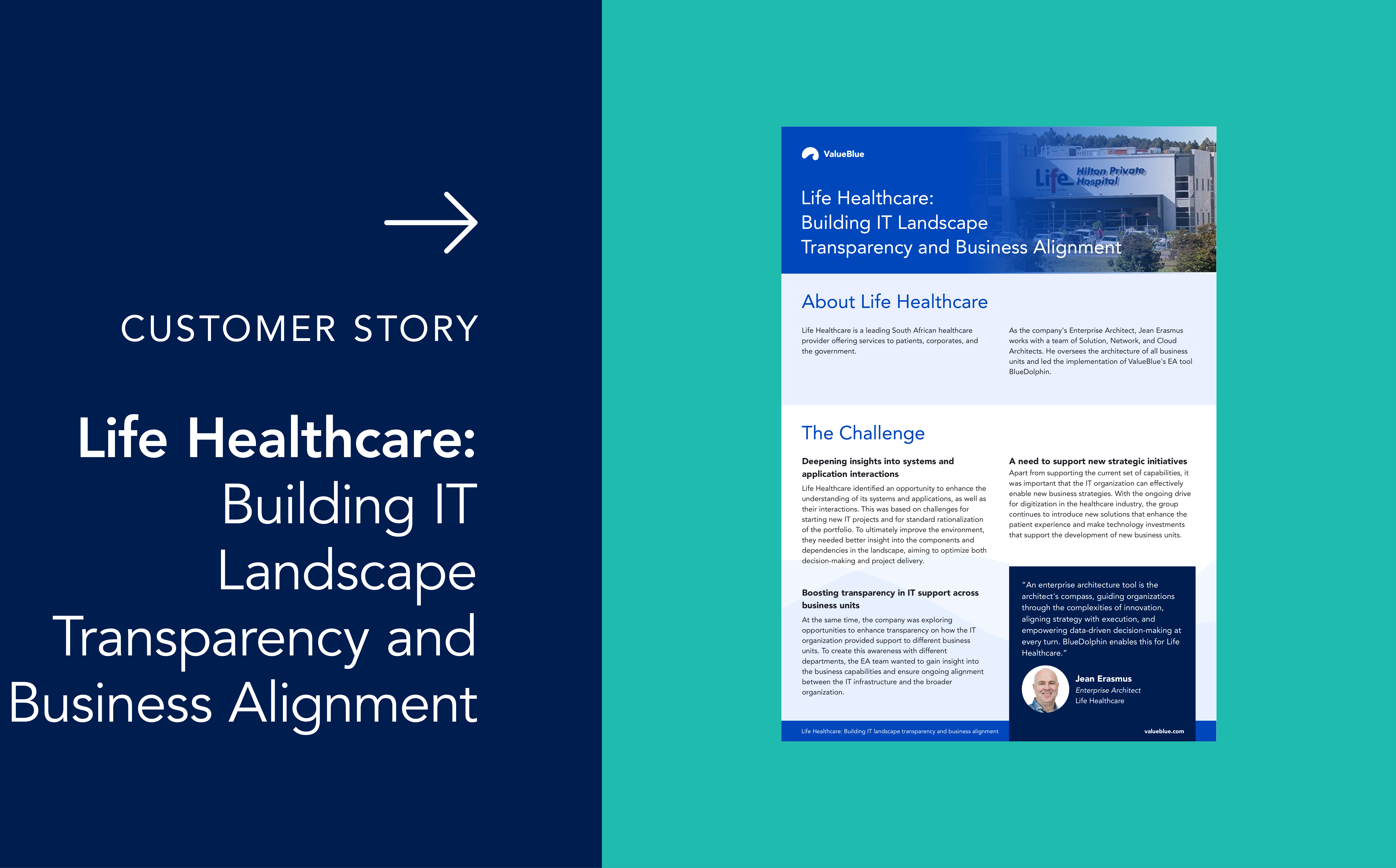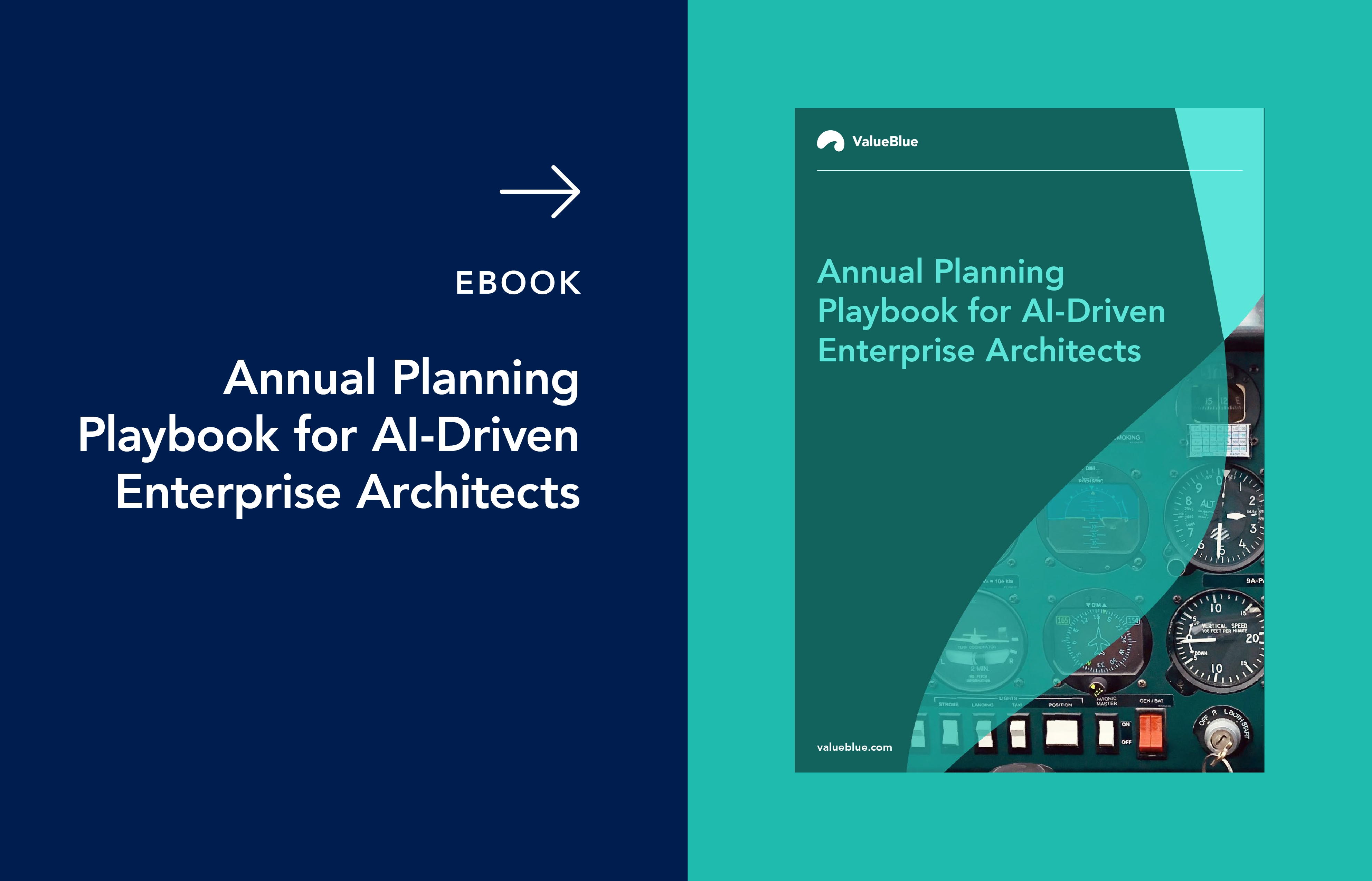How Gartner Evaluates ValueBlue in their 2022 MQ for EA Tools
The Gartner Magic Quadrant 2022 for Enterprise Architect tools is out. In their annual report, Gartner conducts research into the vendors in the space and maps them in the Magic Quadrant: a graph to visualize the vendors’ positioning in relation to each other.
ValueBlue is proud to have been included in the Magic Quadrant for the fourth year in a row. In this blog, we’ll dive into how Gartner evaluates the vendors, how they’ve positioned ValueBlue, and how they describe our capabilities.
In short: What is the Gartner Magic Quadrant?
Gartner’s Magic Quadrant report is a first step to understanding the technology providers you might consider for a specific investment opportunity. Instead of having to look up and compare the different vendors yourself, Gartner provides a comprehensive analysis of those that they deem relevant in the market. Not all vendors make it to the report (more on that later), but those that do go through a substantial review period with Gartner’s analysts.
The end result is an overview of the market developments, a description, strengths and weaknesses per vendor, and Gartner’s Magic Quadrant: A graphical positioning of competitive vendors, distributed over four types: Niche Players, Visionaries, Challengers, and Leaders. People looking for the right tool for their organization’s needs, can use the report as a first step to understanding and differentiating between the technology providers’ offerings.
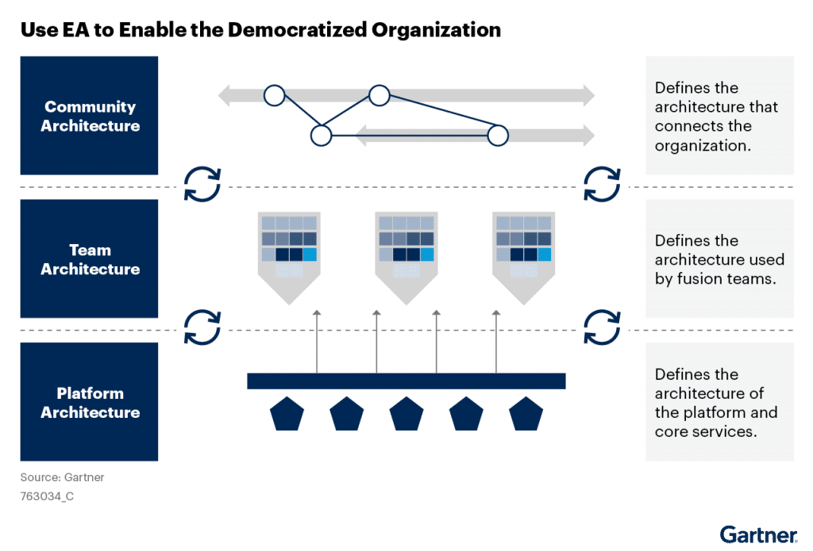
How does Gartner evaluate the vendors?
Gartner themselves provide an elaborate explanation of their methods. Being aware and understanding the driving factors behind the report’s conclusions will help to provide context and further insights. What it comes down to is an evaluation of various sources such as vendor briefings, product demonstrations, interviewing reference customers and industry contacts, Gartner’s platform Peer Insights featuring customer reviews, conducting surveys, and of course, consulting Gartner’s own market analysts.
This means not all vendors in the space are eligible to be included in Gartner’s report. As Gartner writes: “A Magic Quadrant is not intended to be an exhaustive analysis of every vendor in a market but rather, a focused analysis. The criteria for inclusion may consist of market share, number of clients, installed base, types of products/services, target market or other defining characteristics. These criteria help narrow the scope of the research to those vendors Gartner considers to be the most important — or best suited to the evolving needs of Gartner’s clients as buyers in the market. Overall, the Magic Quadrant has 15 weighted criteria that are used to plot vendors on the graph based on their relative strengths in the market.”
On ValueBlue’s inclusion in the 2022 Gartner Magic Quadrant for EA Tools.
In this year’s report, ValueBlue has been recognized for its completeness of vision and ability to execute in the 2022 Gartner MQ for EA tools, now for the fourth consecutive year – something we’re very proud of. We are named a Niche Player, with Gartner recognizing that “ValueBlue has improved on its Ability to Execute and Completeness of Vision” as compared to the 2021 Magic Quadrant for EA Tools.
So what are Gartner’s conclusions on ValueBlue and our platform BlueDolphin? The report provides three strengths per vendor, these are ours:
-
Improved market focus;
-
Support of EA agility;
-
Easy startup.
Let’s provide our context for each one. Here’s how we realize our strengths.
-
Our international growth in terms of expanding the teams in our four offices (the Netherlands, New York, London, and Hong Kong) is resulting in stronger market presence. Consequently, we have increased our client base on an international scale. Additionally, we make sure to stay in tune with the developments and trends in the space and adjust our services accordingly, thus positioning ourselves “with messages that have a positive impact on [our] client base.” This approach strengthens our innovative drive and constant development of our solution to customers’ needs.
-
Our platform BlueDolphin functions as an organization’s central repository of data and Enterprise Architecture designs. Having all data in a single place, accessible to all relevant stakeholders, makes for a platform that empowers organizations to work in an agile, data-driven way, with one single source of truth. BlueDolphin empowers Enterprise Architects to take their Architecture to the next level and accelerate the organization’s business transformation, while at the same time being accessible to the other stakeholders within the organization. Through effortless data-gathering methods and preconfigured templates, BlueDolphin allows for standardization of practices and expectations, which results in shorter time-to-value. The alignment between IT and Business (EA to support organization-wide strategy), makes for a platform where all personas can collaborate towards the same organizational objectives.
-
As BlueDolphin centralizes agility, collaboration, and a data-driven approach for roles extending beyond the Enterprise Architects, learning and applying its features and functionalities comes easy. Customers experience a quick and effective onboarding to get started quickly and can expand to more complex designs as they progress and mature, aided by a complementary Customer Success program.
Dissecting the Magic Quadrant’s vendor characteristics
So what is the difference between vendors divided over the four quadrants? There is a common misconception that vendors positioned as Visionaries or Niche Players of the quadrant somehow “fall short” in comparison to the Leaders. This is not the case. Take another look at those segment names: Visionaries are rightly being recognized for their cutting-edge solutions in a market with Leaders that may be somewhat static.
Similarly, Niche Players are often so-positioned in recognition for their strengths within particular market segments, geographies, or verticals. Typically, vendors in the Niche Player segment are also often newer to the market – which brings with it a drive for innovation and the opportunity for you as a buyer to implement a platform before it becomes a market leader (with pricing to match).
Finally, as technology advances and the market demands change, so too should vendors’ offerings. These developments have accelerated over the past few years, resulting in varying Magic Quadrant graphs. It’s worth seeing how vendors have been positioned over the quadrants year-over-year. Has their offering improved to match the market’s changing needs?
Are you curious to read the full Gartner Magic Quadrant for Enterprise Architecture Tools 2022?
